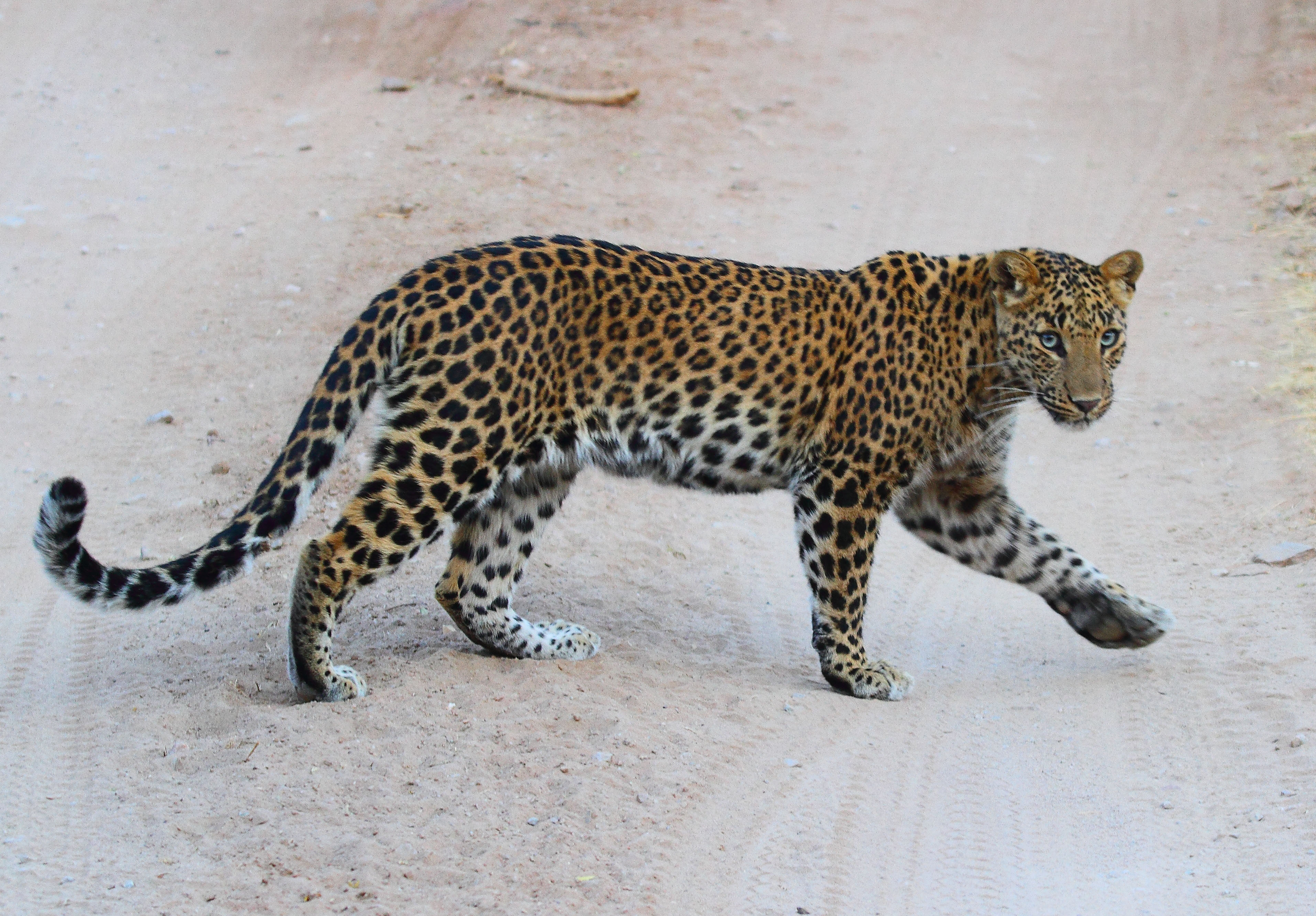
Udaipur King Panther of our forests is now looking for places where he has never had a presence before, to find his new territory. This fact has been recently highlighted by researchers from Udaipur and Jodhpur in their research papers.
Dr. Satish Sharma, a renowned environmental scientist and retired Assistant Conservator of Forests of Udaipur, Dr. Shravan Singh Rathore, Medical Officer of Machia Biological Park, Jodhpur and Dr. Vijay Koli, Assistant Professor and Environmentalist of Mohanlal Sukhadia University, has conducted a research paper published in The National Academy of Sciences, In its research paper published in India, it has been reported that panthers (tendrils) usually living near evergreen forests and residential areas have started moving towards the Thar Desert for the last decade whereas it never had a presence in these areas.
The paper, titled 'Leopard expansion and movement towards the Thar Desert of Rajasthan', states that the leopard (Panthera parades) is a large cat species found in a wide area that inhabits both protected and human-dominated areas. In India, it is mainly found on the edges of the deciduous, evergreen, shrubby forest and human habitation. But its presence was still absent in the arid regions of Rajasthan (Thar desert) and Gujarat (Kutch region) and high Himalayan regions.
Attendance saw in these five districts of Thar:
Researcher Dr. Vijay Koli said that in this research, the presence of this species was recorded from five districts of Rajasthan, which are found in the extension range of Thar Desert. He said that this species was found in different types of habitat areas in Jodhpur, Jaisalmer, Churu, Barmer and Bikaner districts. Such as university campuses, factory campuses, near fields, surrounded by wells, bush extension areas, and human habitat areas. He said that it is the most surprising fact that all the identified panthers were male.
Distance from 55 to 413 km:
Dr. Koli said that he had based the 14 incidents of the last ten years in five districts for research, out of which the presence of these panthers was recorded from 55.4 km to 413.4 km from their known border area, which is located in the Thar Desert. It is in the expansion area. In most of these cases, these male leopards were caught by the forest department and then released into their designated boundary area.
According to researchers, these reasons are possible:
Environmental scientist Dr. Satish Sharma says that panthers generally maintain their territory. He does not allow the second panther to enter the territory. Therefore, it is difficult for all male panthers to live in a fixed boundary area due to the increasing number of panthers in a fixed boundary area or simultaneously increasing number of male panthers. Powerful and powerful males establish their limits, but weak or defeated male panthers have to migrate from there and move to another place. So when the number of panthers in a particular region increases, the new male panther has to move to other areas in search of his independent territory. He said that such cases have also been seen in Ranthambore, where Tiger moved to other areas as his numbers increased.
According to Dr. Sharma, another reason is the increase in irrigation facilities, farming, and plantation activities in the Thar Desert due to the presence of the Indira Gandhi Canal. All these actions have increased the amount of vegetation cover in the Thar desert. The availability of water is also found throughout the year due to the canal's presence. All these conditions provide a favorable environment for the panther's residence.
According to Sharma, the third reason is that due to increasing vegetation cover and availability of water, there has been an increase in the number of domesticated animals and wildlife in the Thar Desert. Panthers are hunted year-round due to their good presence throughout the year. This situation will also help in establishing this species here in the future.
Permanent shelter possible in Thar also:
Researcher Dr. Shravan Singh Rathore, Medical Officer of Machia Biologic Park, Jodhpur, says that in the present research, it has been found that at present only male leopards are entering the Thar Desert. Therefore, if the female leopard also enters in future, then this species can establish its presence in the Thar desert permanently. In addition, there is a possibility that in the future cases of human-leopard conflict may increase in these areas.